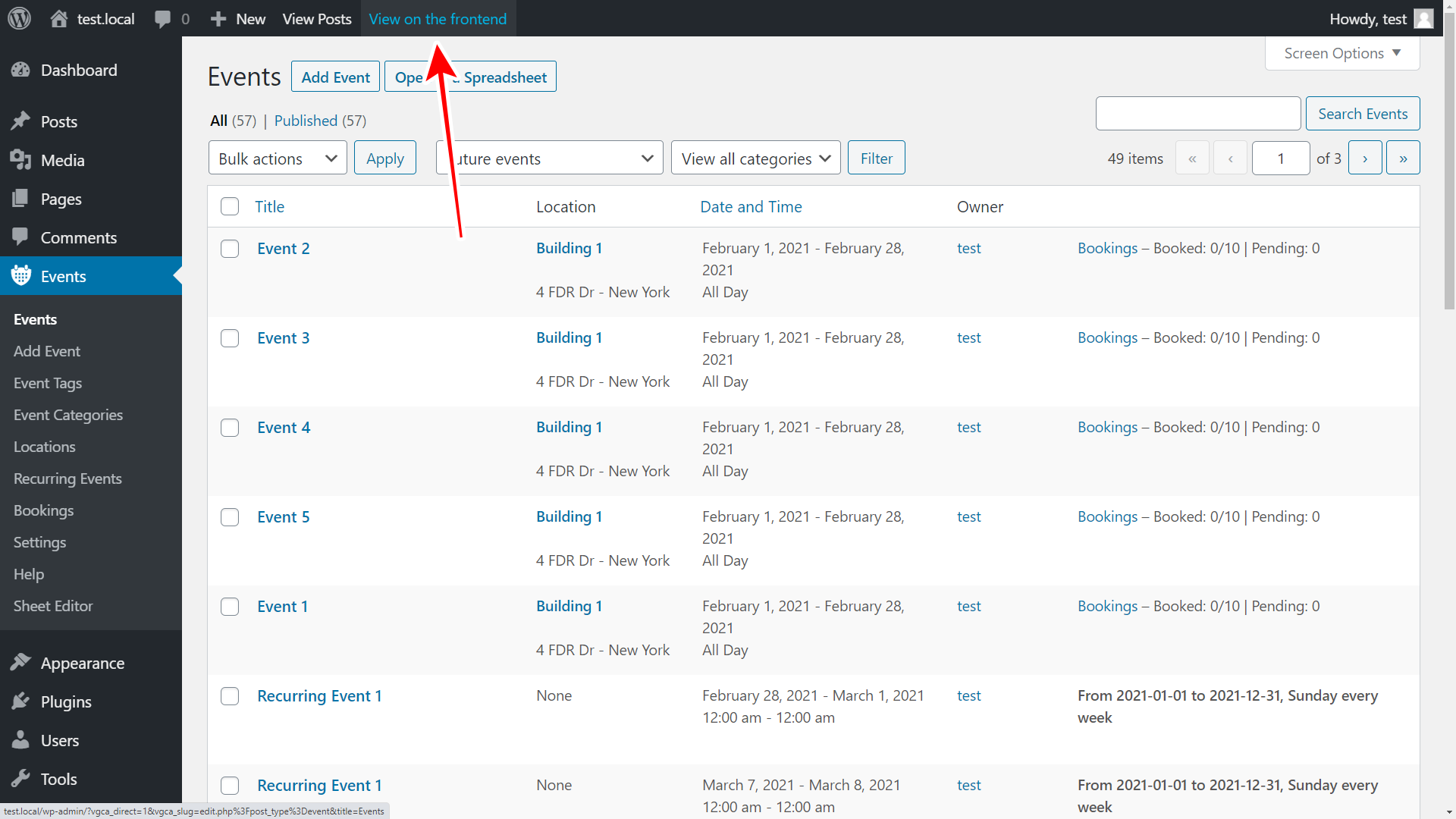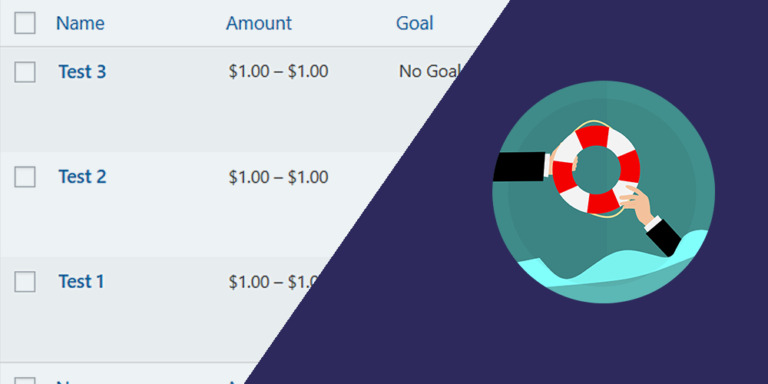Welcome! This post is part of a short series where we will show you how to build a beautiful frontend dashboard for the Events Manager plugin. Your users will be able to manage events and everything that has to do with events (locations, bookings, etc.) from a beautiful frontend dashboard.
You can use this dashboard to sell the platform to a client who wants a simplified way to manage their events. You can also use the platform for your own company, allowing your users to create and manage events from this frontend dashboard. You can even create a multisite events platform and sell memberships using the WP Ultimo plugin.
In this tutorial, we’ll show you how to manage events from the Events Manager plugin on the frontend.
You’ll be able to create a frontend page that will display your events from the Events Manager plugin, and you’ll do this without having to write a single line of code. Just some clicks, and your frontend page will be done.
We’ll use the WP Frontend Admin plugin, which allows you to:
- Create WordPress frontend dashboards using your own design without programming anything.
- Create web apps based on WordPress plugins and sell memberships using any membership system.
- Create global frontend dashboards for WordPress multisite and WP Ultimo.
You can download the plugin using the following button:
You can try the premium plugin on your website for free for 7 days.
After installing and activating the plugin, you need to follow these simple steps to create a frontend page that will allow you to manage events on the frontend:
1- Display your events list on the frontend
The first thing you need to do is open the events list in wp-admin; for this, go to Events.
After that, you need to click View on the frontend to display your events list on the frontend.
With these two simple clicks, you can save all the time and effort you would dedicate to create the frontend page from scratch. Not to mention that you would need advanced WordPress knowledge to be able to do something like that.
It is also important to say that WP Frontend Admin is fully compatible with any page builders like the ones we mention below:
- Elementor
- Visual Composer
- Gutenberg
- Divi
- Beaver Builder
- WP Page Builder
- Page Builder by SiteOrigin
- Oxygen
- Live Composer
- Brizy
- Etc.
If you’re using any of these page builders, you can use the following shortcode to display the events list on the frontend:
[vg_display_admin_page page_url="edit.php?post_type=event"]
Just paste the shortcode wherever you want to display the events list and click Preview.
2- Select your frontend events page’s basic information
Once you click View on the frontend, the WP Frontend Admin plugin will display your events list on the frontend.
It will show you a Quick Settings panel on the left side of the screen, which you can use to set up your frontend pages easily.
You can start setting up your new frontend events page by selecting the following information:
- Page title: Enter the new page’s title here.
- URL slug: Enter the URL slug here using keywords only.
- Page template: Select the page template here. We’ll select the Default layout to use the theme’s settings.
- Add page to this menu: You can select a navigation menu to display the page. Select the frontend dashboard’s menu.
3- Hide any unnecessary elements from your frontend events page
WP Frontend Admin allows you to customize your frontend admin pages by hiding any unnecessary elements, that is, elements your users won’t need to manage the admin content.
In this case, you can remove any elements your users won’t need to manage the events on the frontend. Just follow these two simple steps:
- Click Hide element.
- Click the element you want to hide.
Just take into account you need to repeat these two steps with every element you want to remove from your frontend page.
You can also toggle the Hide notices added by other plugins or themes checkbox.
4- Edit the texts on your frontend events page
If you want to customize your frontend events page even more, you can edit any of its texts. Just follow these really simple steps:
- Click Edit texts.
- Edit all the texts you want.
- Click Stop editing texts.
5- Hide any unnecessary columns from your events page
WP Frontend Admin allows you to hide some columns from your events list. This is really useful because you can simplify the frontend page even more.
Just go to the Disabled columns section in the Quick Settings panel and tick the columns you want to hide.
You can also tick the The users should see the posts created by them only to limit the events the users will be able to see; they will see their own events only.
Finally, you can click Save to publish your new frontend events page.
Important: You can also edit the Add Event form to hide any unnecessary elements and edit some texts. Just click Add Event or open an existing event and start making the changes you want to simplify the add/edit event form.
This is how the list of events from the Events Manger plugin will look on the frontend:
This is how the add/edit event form will look on the frontend:
And this is a gif of how the complete dashboard will look at the end of this short series:
Keep in mind that only the users with the edit_events capability will be able to manage events on the frontend. Follow this tutorial to learn how to assign that capability to any user role in WordPress.
Important
You can apply the same steps showed in this tutorial to display and manage the recurring events on the frontend. In that case, you need to use this shortcode to display the recurring events on pages created with any WordPress page builder:
[vg_display_admin_page page_url="edit.php?post_type=event-recurring"]
In our next tutorial, we’ll show you how to view and manage event categories and tags on the frontend.
You can try the premium plugin on your website for free for 7 days.











